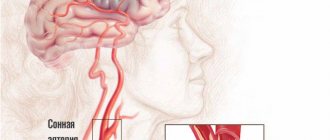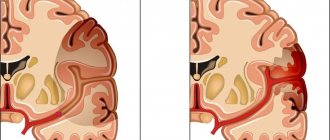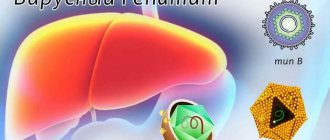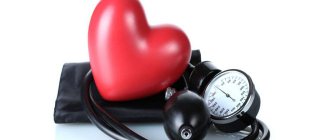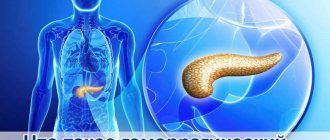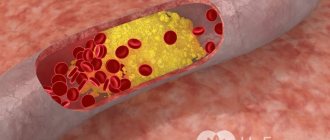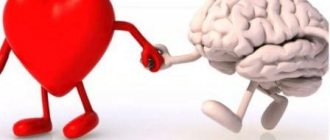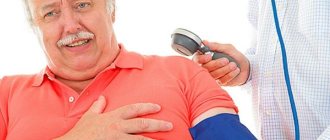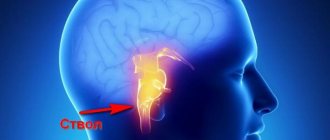Stroke
Every year, an increasing number of young people, especially students, are admitted to the hospital with this diagnosis. This is due to the fact that studying and preparing for exams takes a lot of time and particularly diligent students simply do not have time to rest. The stroke in this case is precisely the result of overwork.
There are two main types of stroke: ischemic stroke and hemorrhagic stroke. Before prescribing treatment, doctors need to accurately determine the type of disease. After all, subsequent actions will depend on this. This is not so easy to do, since both types have a number of similar symptoms. To somehow alleviate the situation, it is necessary to consider each type in more detail.
Features of ischemic stroke
How to distinguish ischemic and hemorrhagic stroke? In the first case, circulatory problems occur due to narrowing of blood vessels and the formation of blockages. Oxygen and other substances necessary for proper brain function cease to flow. Then the brain cells simply begin to die. This process is also called cerebral infarction.
Complete death of cells without the ability to revive them occurs after 48 hours. Therefore, regardless of the cause of an ischemic stroke, with timely diagnosis, the patient still has a chance to be saved. Restoring blood flow allows you to improve brain function and avoid disability or death.
However, if precious time is lost, swelling of the brain tissue may occur, it will increase in size, and, as a result, death occurs.
Which stroke is more dangerous?
Any type of acute cerebrovascular accident poses a serious danger to the life and health of the patient. The consequences are always serious. According to medical statistics, approximately 20% of patients die in the first month after a stroke, and 10% of survivors die over the next year.
The danger of hemorrhagic stroke lies in the rapid increase in clinical symptoms and the addition of complications, primarily from the cardiovascular and respiratory systems.
Full restoration of neurological functions can be expected in no more than 40% of patients. All others develop persistent neurological deficits of varying severity, up to complete loss of ability to work. Recurrent stroke occurs in approximately 15–30% of patients.
The danger of hemorrhagic stroke lies in the rapid increase in clinical symptoms and the addition of complications, primarily from the cardiovascular and respiratory systems. But hospitalization for this form of the disease usually occurs quickly, which facilitates the early start of treatment, before the onset of irreversible changes in the brain tissue.
If signs of a stroke appear, the patient requires urgent hospitalization
Symptoms of ischemic stroke increase gradually, so the disease cannot always be recognized in the early stages. In turn, this leads to a delayed start of therapy and restoration of cerebral blood flow, which worsens the prognosis.
Thus, to paraphrase a well-known expression, we can say that in the case of strokes it is impossible to choose the better or the worse of two evils.
Features of hemorrhagic stroke
Hemorrhagic stroke is less common than ischemic stroke. It mainly affects young people. This type of stroke is the most dangerous. In ninety cases out of a hundred, death occurs.
In a hemorrhagic stroke, bleeding occurs. This process may be accompanied by rupture of blood vessels. It can also occur without compromising the integrity of their shell. When blood vessels rupture, blood flows out under high pressure, forming hematomas and tumors. If a rupture does not occur, then the walls of the vessels begin to stretch and allow blood to flow into the surrounding brain tissue. The consequence of hemorrhage can be numerous hematomas and scars that develop into cysts.
As we see, both ischemic and hemorrhagic stroke pose a danger to human life; the only difference is in the reason for their occurrence.
Precursors of cerebral infarction
The most favorable time for the development of the disease is night or morning. To prevent the dangerous consequences of the disease, you need to know what precedes a heart attack.
You need to urgently call an emergency medical team if you have the following signs:
- acute migraine;
- vomiting, nausea;
- clouding of consciousness;
- violation of speech functions;
- numbness in the arms and legs.
Precursors of cerebral hemorrhage: vomiting, fainting, intense headache. Before the ambulance arrives, you need to lay the victim down, raise his head, ensure access to oxygen and rest, check blood pressure, rub his arms and legs. Cardiomagnyl and Glycine will help improve brain activity.
Ischemic syndrome and hemorrhagic stroke do not differ much in the manifestation of primary symptoms; the only sign by the presence of which a cerebral hemorrhage can be diagnosed is fainting.
Signs preceding a heart attack
Risk area
At risk of ischemia are people suffering from diabetes mellitus, hypertension, people with cardiac arrhythmias, low blood clotting and those with a hereditary predisposition. Overweight patients are also at risk. The last reason has become the most common in modern society. After all, every year the number of people suffering from obesity is growing. There is also a high chance that an ischemic stroke will occur after a hemorrhagic stroke.
In this case, the main risk group also includes hypertensive patients and obese people. This type of stroke affects people with congenital vascular pathology. Severe intoxication of the body can also cause the development of hemorrhagic stroke, as well as vitamin deficiency, vascular aneurysms and other inflammatory processes.
Bad habits such as smoking and alcohol also contribute to the development of stroke.
Causes and risk factors
Ischemic and hemorrhagic types of brain damage are characterized by different causes of the development of the disease.
The main cause of ischemic stroke is cerebral atherosclerosis. Patients often suffer from other diseases that develop against the background of atherosclerosis (angina pectoris, myocardial infarction).
Causes of different types of cerebral infarction:
- Atherothrombotic occurs as a result of thrombosis of large and medium arteries. The development of ischemic atherothrombotic stroke is stepwise, occurs within a day, attacks often begin in sleep;
- Cardioembolic develops as a result of complete or partial embolism (blockage) of an artery. The onset is sudden during wakefulness, accompanied by severe neurological symptoms. Often develops into hemorrhagic stroke (ischemic stroke with hemorrhagic transformation);
- Hemodynamic is caused by a decrease in blood pressure, a drop in cardiac output (myocardial ischemia, bradycardia);
- Lacunar develops against the background of hypertension as a result of damage to small perforating (extending from the main arteries) vessels. Symptoms increase gradually. It is distinguished by the absence of general cerebral symptoms and the severity of focal symptoms in accordance with the localization of ischemia (paralysis, loss of vision, speech impairment);
- Rheological or hemorheological microocclusion. The cause of the disease is not vascular occlusion (blockage), but a change in blood viscosity due to impaired hemostasis. Accompanied by scant neurological symptoms;
The causes of hemorrhagic stroke can be primary (defect in the development of vascular walls, decreased elasticity and strength) and secondary.
The primary causes of cerebral hemorrhage include rupture of an aneurysm. Secondary ones include grade 2 and 3 hypertension and embolism (complete blockage of an artery by a blood clot).
Risk factors:
- Heredity (hemophilia);
- Constant stress, chronic fatigue (leads to vascular spasms and the development of ischemia);
- Overweight;
- Diabetes;
- Heart disease (arrhythmia);
- Lipid metabolism disorders, atherosclerosis (threatens embolism);
- Bad habits (alcohol, smoking).
Symptoms of the disease
How does ischemic and hemorrhagic stroke manifest? Symptoms of the disease most often begin to appear in the evening or at night as a result of physical or emotional stress. The first signs appear very quickly and cause a sharp deterioration in well-being.
The patient experiences rapid heartbeat and stabbing pain in the chest area. The person feels weak, dizzy, and nauseous. There is a disturbance in balance, speech and numbness of the face and other parts of the body, a feeling of heat, drowsiness or sudden agitation.
Stroke symptoms may differ between men and women.
Ischemic and hemorrhagic stroke. Differences in symptoms between men and women
For the stronger half of humanity, stroke ranks fourth in the list of the most common causes of death. With cerebral ischemia, they experience the following symptoms:
- A couple of days before a stroke, a man may experience severe headaches and dizziness.
- There may be a sharp deterioration in vision.
- Vomiting and mental confusion.
- The patient's limbs may go numb for some time.
A hemorrhagic stroke occurs due to rupture of blood vessels in the brain, and as a result, a man may fall into a coma.
Symptoms accompanying this type of stroke in men are as follows:
- high pressure;
- loud breathing and purple complexion;
- vomit;
- involuntary bowel movements may occur;
- the look becomes indifferent;
- paralysis occurs, in which facial asymmetry is observed.
If a man does not die within a year with a hemorrhagic stroke, then he will definitely remain disabled for the rest of his life.
The danger of a female stroke lies in the fact that its first signs (loss of consciousness, nausea, vomiting, migraine, weakness, dry mouth, chest pain, breathing problems) cannot always be associated with impaired blood circulation in the brain.
The risk of stroke in women is many times greater than that in men. Because the fairer sex is less stress-resistant and often gets hung up on their problems, and this is fertile ground for the development of this disease. Pregnant women should generally avoid stressful situations and worries.
Before the onset of an attack, the woman begins to feel:
- severe headache;
- numbness of the face and other parts of the body;
- loss of coordination;
- impairment of vision, hearing and speech.
Ischemic stroke and hemorrhagic stroke are very serious diseases for both men and women. And when you identify the first signs, you should immediately consult a doctor, because every minute counts.
Types of cerebral strokes by developmental mechanism
In the International Classification of Diseases (ICD-10), cerebrovascular pathologies are allocated 10 subsections, of which 5 cover stroke directly (I60-I64). The types of pathology differ in the nature of its course, etiology, and treatment tactics used.
Based on the mechanism of development of the disease, there are 3 main groups:
- ischemic;
- hemorrhagic;
- transient ischemic attacks.
Each type is classified within the group, depending on the factors associated with the disease.
The division of pathology into hemorrhagic and ischemic is quite arbitrary, since with these two forms, foci of both types of strokes appear in the patient’s brain tissue. But based on the predominance of diagnostic criteria, priority is given to one of the types.
Correctly classifying the disease at an early stage is extremely important, since the choice of treatment method and prognosis directly depend on it.
Ischemic
Types of stroke related to ischemic are the most common (80% of cases).
The disease is common in people over 50 years of age against the background of concomitant pathologies: rheumatism, diabetes, cardiac dysfunction, and previous myocardial infarction. A separate category is migraine stroke, which is the result of regular paroxysmal headaches (migraines). This type is more common in women under 45 years of age.
The provoking factor is the occurrence of obstacles to free blood flow inside and outside the skull, which leads to metabolic disorders in brain cells. As a result, necrosis (ischemia) develops.
A person feels:
- weakness;
- headache;
- dysfunction of motor coordination;
- numbness in the arms or legs.
Classification of ischemic stroke includes types:
- Atherothrombolic - occurs with atherosclerosis of large and medium arteries. An obstruction to blood flow is created by a plaque that has clogged the vessel; the size of the necrosis focus can vary. Symptoms of the pathology increase gradually over several hours or days; the condition worsens at night. The disease is often heralded by a transient ischemic attack, and multiple microstrokes are possible.
- Cardioembolic - the culprit of the disease is cardiogenic embolism. It is caused by valvular heart defects, parietal thrombi formed in it, rheumatic or bacterial endocarditis, and atrial fibrillation. The embolic focus of necrosis is predominantly of moderate or large size, located in the middle artery of the brain. The cardioembolic type is characterized by a sudden attack in the daytime with severe neurological symptoms.
- Hemodynamic - formed when pressure decreases, as a result of which metabolic processes in the brain are disrupted. There is no blockage of the arteries. The cause may be a drop in cardiac blood volume due to bradycardia, ischemia, or vascular abnormalities. Localization of lesions is possible in any part of the brain.
- Lacunar - typical for people over 50 years of age. The causes are hypertension and embolism. The disease is provoked by damage to one of the small arteries (up to 10 cm long, up to 0.2 cm in diameter) connecting the large ones. The vessel is compressed by a lacunae, a formation filled with cerebrospinal fluid. The lesion up to 1.5 cm is localized in the subcortical layer. Symptoms increase slowly over several hours.
- Hemorheological microocclusion - the cause is dysfunction of blood clotting, when small vessels are blocked by blood clots.
The ischemic type is dangerous due to the gradual development of pathology. Periods of deterioration are followed by improvements in well-being. The attacks are repeated, resulting in paralysis in the patient.
Hemorrhagic
The pathology is caused by a ruptured vessel in the brain and hemorrhage, which is quite difficult to stop. The causes are predominantly cardiovascular pathologies.
Hemorrhagic and ischemic cerebral stroke - the difference between the concepts lies in the mechanism of development of the pathology. In the first case, the consequences are more severe than in the normal (ischemic) form. The difference between a hemorrhagic stroke is that it involves compression of the brain tissue by a hematoma formed during the flow of blood.
The pathology mainly occurs at the age of 45-65 years, and hypertension is often the cause. Sometimes the provoking factor remains unclear.
The peculiarity of the hemorrhagic type is its rapid development, which occurs when a person is under stress (physical or emotional), often during the daytime.
Hemorrhagic stroke is much less common than ischemic stroke, but the mortality rate is higher. Symptoms manifest themselves sharply: a feeling of a “blow to the head”, severe pain, increased pressure, facial paresis, prolonged loss of consciousness, hoarse breathing, hemorrhage in the eyes, paralysis of the limbs, vomiting.
Transient ischemic attack
The pathology is characterized by a brief disruption of blood circulation in individual areas of the brain, leading to hypoxia and cell death.
The difference between a TIA and a stroke is that during an attack there is no complete cessation of tissue nutrition. A small blood flow to the damaged area remains, the symptoms gradually subside (over the course of a day), and there is no progression of the pathology.
After the transient attack is completed, healthy cells take over the function of dead cells, and foci of necrosis do not increase.
There are types of transient attacks:
- Vertebrobasilar - occurs in 70% of patients. This type develops abruptly, often manifested by a sudden turn of the head to the side. Dysfunctions of vision, speech, and movement disorders occur.
- Hemispheric - this type is characterized by migraines, dizziness, loss of consciousness. The cause is changes in the cervical vertebrae.
- Spinal muscular atrophy (SMA) - damage to the carotid areas of the brain causes motor and sensory dysfunction. With ischemia in the right basin, the MCA develops on the left.
Sometimes, with a mild or moderate attack, the symptoms are mild - then a diagnosis of an unspecified type of TIA is made.
Which hemisphere is affected?
Symptoms of the disease may also differ depending on which hemisphere of the brain is affected. With a left stroke, problems with speech and lack of logical thinking are observed. The right side of the face and body is taken away. Left hemisphere infarction most often occurs in people who suffer from arrhythmia and are overweight. After all, it is this category that is most susceptible to the formation of blood clots.
With a stroke of the left hemisphere, the patient’s physical activity is restored quite quickly. But with speech and memory, things are much worse. The patient has difficulty understanding someone else's speech, cannot write, and has problems with reaction. In this case, speech may not be restored at all. Left hemisphere infarction is considered the most common.
Diagnosing a stroke in the right hemisphere is much more difficult than in the left, because this side is responsible for feelings and emotions.
In this case, the person experiences depression and paralysis of the left side of the body. People with this diagnosis remember their past very well, but forget the events of the current day.
It will take a lot of time to recover from such a stroke. After all, the patient ceases to feel his limbs, and sometimes the whole body.
With a stroke of the right hemisphere, focal symptoms may also be observed: dizziness, disorientation in space, a person ceases to feel the speed of movement and does not distinguish the shape of an object.
Subarachnoid and spinal
Subarachnoid and spinal types of stroke deserve special attention. The first one has already been mentioned above, because belongs to the subtypes of hemorrhagic. The second does not directly affect the brain, but can be even more dangerous.
Subarachnoid
The main reason why this type of stroke deserves such attention is its prevalence. It occurs very often, which makes information about it very important. It most often occurs in people between 35 and 65 years of age who drink alcohol, smoke, take drugs, are overweight, or have experienced a ruptured aortic aneurysm. In some cases, the cause of such hemorrhage is a traumatic brain injury, and its nature does not matter. A less rare cause is the use of certain medications.
Subarachnoid hemorrhage is accompanied by the following symptoms:
- Severe vomiting;
- Acute headache;
- Muscle tension in the back of the head;
- The appearance of blood particles in the eyes;
- Unconscious state;
- Increased blood pressure;
- Facial paralysis;
- Speech problems.
This type of stroke is no more dangerous than others of the hemorrhagic type, but the lack of timely medical care almost always leads to death. And given the widespread nature of this problem and the high risks for most people associated with the causes of this type of stroke, you should be especially attentive to your health.
Spinal
Brain strokes can be very dangerous, but they are not the only ones. Poor circulation can also occur in the spinal cord. There are not many clinical cases with this problem recorded. It accounts for approximately 1% of the total number of strokes.
When a stroke of this type develops, blood transmission through the spinal arteries ceases or significantly deteriorates. This can happen for three reasons: atherosclerosis, mechanical impact (trauma or surgery) and embolism.
Like a regular stroke, a spinal stroke is divided into ischemic and hemorrhagic. Blockages with this type of problem are much more common, but rupture of the vessel is still dangerous. Often, with a hemorrhagic disorder, doctors are unable to determine that a hemorrhage has occurred in the cerebrospinal fluid. More often this is understood already in the formation of hematomas, when emergency assistance is required. If they are large, then it is almost impossible to achieve complete rehabilitation.
Symptoms of a spinal stroke can vary greatly. It all depends on the place where the circulatory disorder occurred. But almost always the victims' arms or legs are paralyzed. Some of them remain permanently disabled and cannot fully move. This is especially true if the localization of the stroke is the area of the decussation of the pyramids and the upper part of the anterior spinal artery. Symptoms may also include:
- Loss of sensation in one half of the body;
- Hanging head, weakness of neck muscles;
- Superficial sensitivity of the extremities;
- Urinary retention or urinary and fecal incontinence;
- Inability to use the muscles of the foot.
Not every doctor can provide therapy for this type of stroke. Therefore, it is of great importance whether the patient finds a good specialist who is able to prescribe the correct treatment.
Little Bulgaria ranks first in the number of strokes per year. The second and third are Russia and China.
Diagnostics
How is ischemic and hemorrhagic stroke diagnosed? In order to determine the disease, you can ask the patient to perform several simple manipulations:
- Smile. If the corners of the lips on one side remain drooping, this indicates that this side of the face is no longer listening.
- Give your full name and patronymic. If speech becomes slow and drawn out, the patient needs urgent hospitalization.
- Raise your arms to one level. This is impossible to do with a stroke.
- Stick out tongue. If it is asymmetrical, this is also a symptom of the disease.
These signs may indicate ischemic and hemorrhagic stroke. Differences between one species and another can only be identified through RMT. This will also help to exclude the possibility of other diseases and evaluate the location of the brain lesion.
If an ischemic stroke is suspected, additional examination is required in the form of ultrasound of the vessels of the neck and brain, and x-ray of blood vessels. It is also necessary to record an electrocardiogram for 24 hours.
In case of hemorrhagic stroke, ultrasound of the cerebral vessels and consultation with a neurosurgeon are prescribed.
Diagnostic and treatment methods
Differential diagnosis is carried out between the two types of strokes, as well as with other conditions that manifest themselves with similar neurological symptoms. The diagnosis is made by clinical signs, as well as by the results of an MRI of the brain. When, during the diagnosis, it is possible to determine which type of stroke occurred in the patient, treatment can begin. For the hemorrhagic type, emergency measures include stopping the bleeding and stabilizing the patient’s general condition. In case of ischemic stroke, it is important to use drugs to improve cerebral circulation in a timely manner.
Next, the recovery period begins, the duration of which depends on the general clinical picture and the patient’s well-being. It occurs in several stages:
- strict bed rest, in which the patient is prohibited from making any movements independently - takes place in a hospital setting;
- normal bed rest - the patient is allowed to take a sitting position under the supervision of doctors;
- ward mode - if motor function is preserved, it is allowed to move around the hospital ward using support (crutches or canes);
- recovery at home, which includes special exercises, proper nutrition and taking medications to improve the condition of the blood vessels in the brain.
The chances of a full recovery are high with an ischemic stroke, especially with timely medical care. In case of hemorrhagic form, it is important to urgently call an ambulance, otherwise the risk of death cannot be ruled out. The second of them significantly affects the patient’s further quality of life, since complete rehabilitation occurs in rare cases. However, it is possible to maintain mental activity in both cases - this factor depends on the location of the damaged area of the brain. Also, the effectiveness of treatment is influenced by independent compliance with the doctor’s instructions - it is important to do exercises at home, take medications and periodically consult a doctor for re-examination.
Treatment
How should a person be treated if he has an ischemic, hemorrhagic stroke? Treatment should be carried out simultaneously in several directions: general and specific. What are these types?
General treatment is the same for any type of stroke. It consists in normalizing the functioning of the cardiovascular system, respiratory function, and reducing cerebral edema.
We found out how to define hemorrhagic and ischemic stroke. The difference between these types of disease, in addition to the symptoms, will also lie in specific treatment.
In case of a cerebral infarction, procedures must be carried out to normalize blood circulation in the damaged area. Such measures can be carried out either with or without surgical intervention. You should also maintain normal brain function. For this purpose, various medications are used, which must be taken only under the strict supervision of a doctor.
In case of hemorrhagic stroke, it is necessary to reduce the permeability of the vascular wall and prevent the disintegration of an already formed blood clot. To prevent ischemic stroke from occurring after a hemorrhagic stroke, medications are administered into the patient's body in parallel with strict control of blood pressure. The most effective treatment for hemorrhagic stroke is surgery. Although doctors sometimes use other methods.
Ischemic stroke and hemorrhagic stroke. Prevention measures
In order to never hear this terrible diagnosis, it is necessary to take the following preventive measures:
- Get rid of bad habits such as smoking and alcohol.
- Review your diet and eliminate fatty foods.
- Lead an active lifestyle and watch your weight. Due to the fact that this disease is getting younger every year, physical activity is best done under the supervision of a professional trainer or doctor.
- If you have high blood pressure, you should measure it twice a day and visit your doctor regularly.
- If you are under frequent mental stress, you need to find something to do that will allow you to decompress your brain.
Stroke Prevention Measures
Hemorrhage or cerebral ischemia are dangerous diseases that should be prevented. Preventive measures are quite simple but effective:
- Avoid drinking recreational drinks and tobacco products.
- A healthy diet that does not contain fatty foods.
- A healthy lifestyle, playing sports.
- Maintaining normal body weight.
- If your blood pressure is high, take medications to stabilize it in a timely manner.
- Avoid excessive mental stress.
Any type of disease poses a serious threat to human health and life, regardless of age or gender. It is because of a stroke that many patients become disabled.
Hemorrhage or cerebral ischemia are dangerous diseases; preventive measures should be taken
To provide timely assistance, it is important to know the difference between hemorrhage and ischemia. The further prognosis for the patient depends on the timeliness of treatment. Only adequate therapy will save a person’s life.
At the first symptom of the development of a pathological process, it is necessary to urgently call an ambulance team. Before her arrival, take measures to ensure complete rest for the patient and, if necessary, give blood pressure-lowering medications.


